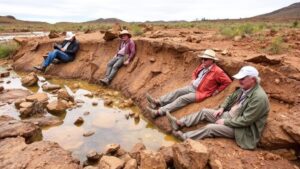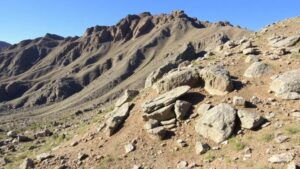Testing Heavy Black Sand Deposits for Gold Using Classifiers
Testing Heavy Black Sand Deposits for Gold Using Classifiers
Heavy black sand deposits, often found along coastlines or riverbeds, are known for their potential to contain valuable minerals, especially gold. Understanding how to effectively test these deposits is crucial for any exploration or mining endeavor. This article outlines the methodologies for testing heavy black sand deposits for gold, with a specific focus on the use of classifiers.
Understanding Heavy Black Sand Deposits
Heavy black sand deposits are typically composed of magnetite, ilmenite, and other heavy minerals that have a higher density than common sand materials. r dark color is indicative of these heavy minerals. Gold, being one of the heaviest naturally occurring elements, often resides within these deposits, along with other precious metals.
Exploration in these environments requires a systematic approach due to the complexity of separating gold from these dense materials. An efficient method to enhance the recovery of gold is through the use of classifiers–devices that sort materials by size and density.
What Are Classifiers?
Classifiers are mechanical devices used to separate particles according to size, density, or both. are widely employed in the mining sector to increase the efficiency of mineral recovery processes. Classifiers operate on the principle that materials with different sizes will behave differently in a fluid medium, allowing for effective separation.
Types of Classifiers
- Spiral Classifiers: Use a spiral auger for conveying coarse material, while allowing finer material to overflow.
- Hydraulic Classifiers: Rely on the hydraulic force of water to separate particles based on their density.
- Screen Classifiers: Employ screens of various mesh sizes to separate different particle sizes directly.
Choosing the appropriate classifier depends on the specific characteristics of the black sand deposit and the desired separation efficiency.
Testing Methodology
The process of testing heavy black sand deposits for gold using classifiers involves several key steps:
- Sample Collection: Collect samples from multiple locations within the deposit to ensure diverse representation. A minimum sample size of 100 kg is recommended for sufficient testing.
- Crushing: Crush the gathered samples to break larger clumps into finer particles that can be effectively processed by classifiers.
- Classifying: Use the selected classifier to separate the crushed materials into different size fractions. Adjust water flow or auger speed as necessary to optimize separation.
- Concentration: After classification, further concentrate the separated materials using methods like panning, shaking tables, or gravity separators.
- Assaying: Perform assays on the concentrated samples to quantify the amount of gold present. This often involves fire assay or atomic absorption methods.
Case Study: Black Sand Mining in the Philippines
A notable example of testing heavy black sand deposits using classifiers can be observed in the Philippines, where numerous coastal communities have engaged in small-scale mining for gold and other minerals. By integrating spiral classifiers with traditional panning methods, miners have reported recovery rates of up to 85% for gold from heavy black sand.
The use of classifiers has enabled miners to efficiently separate gold particles from heavy sands, significantly reducing labor time and increasing yields.
Challenges and Considerations
While classifiers greatly enhance the efficiency of gold extraction, several challenges may arise:
- Material Consistency: Variability in sand composition can impact classifier performance. Continuous monitoring is necessary.
- Maintenance: Classifiers require regular maintenance to ensure they operate effectively, particularly in harsh mining environments.
- Environmental Impact: Mining activities can lead to ecosystem degradation if not carefully managed. Using classifiers helps reduce waste and improve recovery, thus mitigating some environmental concerns.
Actionable Takeaways
Testing heavy black sand deposits for gold using classifiers is a methodologically sound approach that can yield high recovery rates. When conducting such testing, it is essential to:
- Select the appropriate type of classifier based on the characteristics of the sand deposit.
- Use a systematic sampling and testing process to ensure accurate results.
- Stay aware of environmental considerations and perform necessary maintenance on equipment.
By adhering to these guidelines, miners can optimize their exploration efforts, ensuring they extract maximum value from heavy black sand deposits while upholding responsible mining practices.



